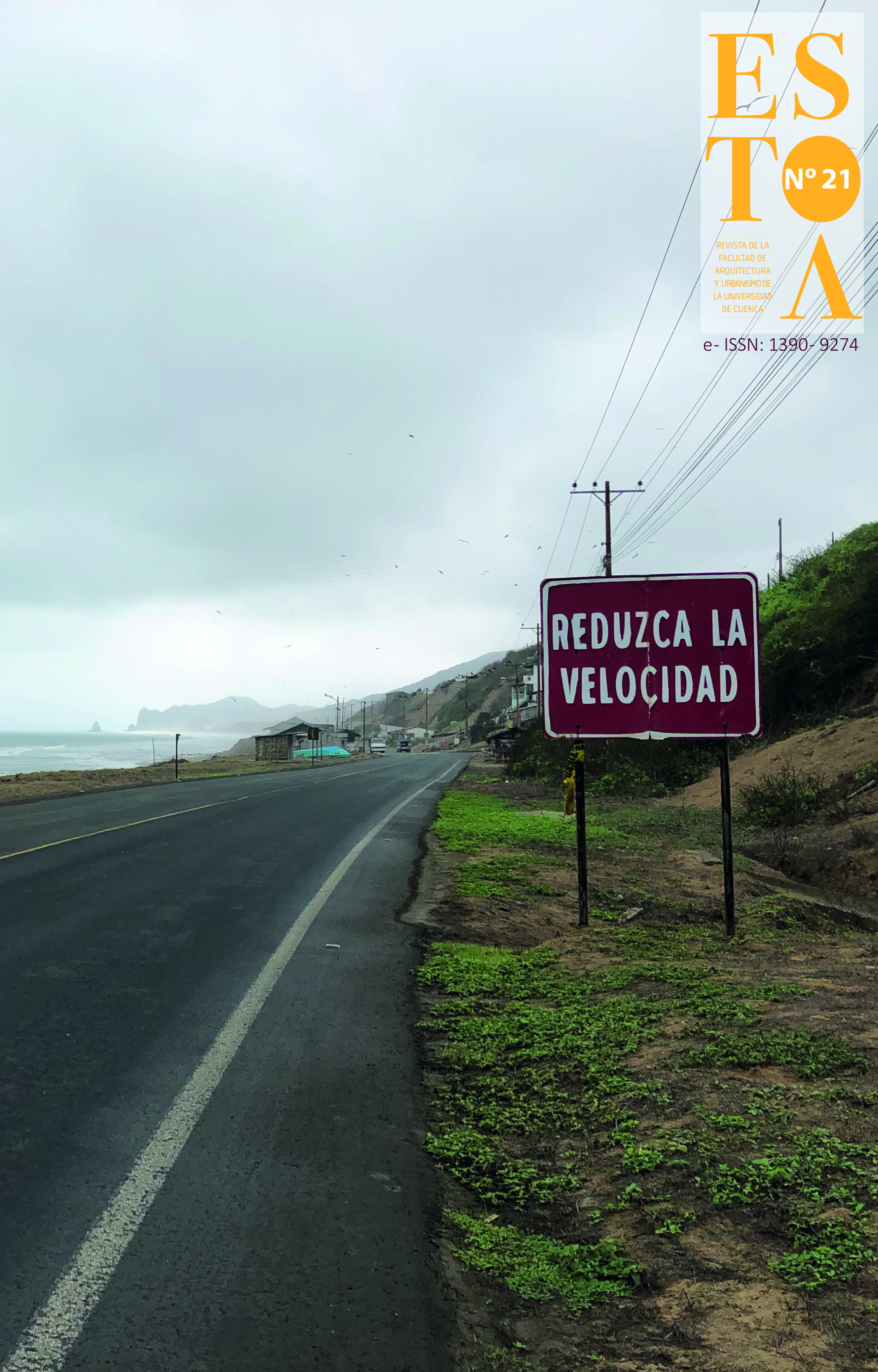Screen architectures in the information age. Notes on media walls and new paradigms
DOI:
https://doi.org/10.18537/est.v011.n021.a11Keywords:
Media architecture, media facade, technology, media, new paradigmsAbstract
Since the mid-20th century, there has been a proliferation of unique architectural practices based on the incorporation of information and communication technologies (ICTs), providing architecture with media skins and facades. This article seeks to lay the foundations for a glossary of ideas, as well as an open classification, to approach the study of this avant-garde trend known as media architecture in an orderly manner. Specifically, two lines of research are analyzed. The first delves into the background of pioneering media systems incorporated into architectural design. The second classifies the range of examples of media architectures that have best reflected this technological trend in recent decades. Through the literature review, supported by a purposive sample of selected works, the conclusions point to a series of new paradigms that allow us to identify when the architectural environment responds positively to the qualifier of mediated and why.
Downloads
References
AA.VV. (2006). ag4 mediatecture company. Media Facades. Ed. daab.
Bablet, D. (1970). Josef Svoboda. La Cité.
Bayer, H. y Gropius, W. (1930). Section Allemande Catalogue. Verlag Hermann, Reckendorf.
Bayer, H. (1939). Fundamentals of Exhibition Design. PM Production Manager, 6(2), 17-25.
Bayer, H. (1967). Herbert Bayer: Painter, Designer, Architect. Reinhold.
Brüning, U. (1982). Zur Typografie Herbert Bayers. En M. Droste (Ed.), Herbert Bayer. Das künstlerische Werk 1918– 1938 (pp. 118-137). Bauhaus-Archiv y Gebr. Mann.
Brüning, U. (Ed.). (1995). Das A und O des Bauhauses. Ed. Leipzig.
Burian, J. (1971). The Scenography of Josef Svoboda. Wesleyan University Press.
Colomina, B. (2001). Enclosed by Images: The Eameses’ Multimedia Architecture. Grey Room, (2), 7-29. http:// www.jstor.org/stable/1262540
Eisenmann, P. (1997). Iglesia para el año 2000. La iglesia en la era de la información. El Croquis, (83), 156.
García-Carrizo, J. (2016). Ciudad y pantallas digitales publicitarias: Motivos, funciones y efectos de su implantación. En M. A. Chaves (Ed.), Ciudad y comunicación. Universidad Complutense de Madrid.
Gorostiza, J. (2018). Fachadas y pantallas. Lo real transformado en ficción. Collectivus, Revista de Ciencias Sociales, 5(1), 40-62. https://doi.org/10.15648/Coll.1.2018.4
Haeusler, M. H. (2009). Media facades: history, technology, content. Avedition.
Haeusler, M. H., Tomitsch, M. y Tscherteu, G. (2012). New Media Facades. A Global Survey. Avedition.
Hespanhol, L., Haeusler, M. H., Tomitsch, M. y Tscherteu, G. (2017). Media Architecture Compendium. Digital Placemaking. Avedition.
Hansen, M. (2004). New Philosophy for New Media. The MIT Press.
Ito, T. y Maffei, A. (2001). Toyo Ito: le opere, i progetti, gli scritti. Electa.
Ito, T., Torres Nadal, J. y Abalos, I. (2000). Escritos. Colegio Oficial de Aparejadores y Arquitectos Técnicos de Murcia.
Jaeggi, A. (2007). Werkbund-Ausstellung Paris 1930. Leben im Hochhaus. Bauhaus-Archiv.
Lotz, W. (1930). Ausstellung des Deutschen Werkbundes in Paris. Die Form, 5(11/12), 281–296.
Lupton, E. (2020). Herbert Bayer. Inspiration and Process in Design. Princeton Architectural Press.
Marinelli, G. (1978). Il Centro Beaubourg a Parigi: “machina” e segno architettonico. Dedalo Libri.
McQuire, S. (2008). The Media City. Media, architecture and Public Space. SAGE Publications.
Miller, W. (2017). Points of View: Herbert Bayer’s Exhibition Catalogue for the 1930 Section Allemande. Architectural Histories, 5(1), 1-22. https://doi.org/10.5334/ ah.221
Mulder, A. (2004). The Object of Interactivity. En L. Spuybroek (Ed.), NOX: machine architecture. Thames & Hudson.
Neuhart, J., Neuhart, M. y Eames, Ch. (1989). Eames Design: The Work of the Office of Charles and Ray Eames. Harry N. Abrams.
Newhagen, J. y Sheizaf, R. (1996). Why communication researchers should study the internet: A dialogue. Journal of communication, 4(1), 4-13. https://doi.org/10.1111/j.1083-6101.1996.tb00172.x
Nieto, M. (2016). Más allá de la pantalla. Espacios dinámicos, múltiples y transformables. En A. Costa y R. Capucho (Coord.). Avanca Cinema. International Conference 2016. (pp. 1099-1107). Cineclube de Avanca.
Ostroff, D. (2015). An Eames anthology: Articles, film scrpits, interviews, letters, notes, speeches by Charles and Ray Eames. Yale University Press.
Perrella, S. (2001). Hypersurface theory: Architecture >< Culture. En G. Cristina (Ed.), Architecture and Science. (pp. 138-148). Chichester.
Piano, R., Rogers, R. y Picon, A. (1987). Du Plateau Beaubourg au Centre Georges Pompidou. Centre Georges Pompidou.
Puglisi, L. P. (1999). Hyperarchitecture Spaces in the Electronic Age. Birkhäuser.
Roulet, S. y Soulié, S. (1991). Toyo Ito: l’architecture de l’éphémère. Moniteur.
Stojšić, M. (2017). Media Facades: Architecture and/as a Medium in Urban Context. AM Journal of Art and Media Studies, (12), 135-148. http://dx.doi.org/10.25038/ am.v0i12.173
Townsend, A. (2004). Digitally mediated urban space: New lessons for design. PRAXIS: Journal of Writing + Building, 6, 102.
Trachana, A. (2021). Envolventes performativas y “la ciudad escena”. Bitácora Urbano Territorial, 31(2), 173-187. https://doi.org/10.15446/bitacora.v31n2.85992
Ursini, G. (Ed.) (2009). Josef Svoboda. Escenógrafo. El mundo en un espejo. Litograf.
Venturi, R. (1998). Iconography and Electronics upon a Generic Architecture: A View from the Drafting Room. The MIT Press.
Venturi, R. (1966). Complexity and Contradiction in Architecture. Museum of Modern Art.
Venturi, R., Scott Brown, D. y Izenour, S. (1972). Learning from Las Vegas. The MIT Press.
Vermeir, K. (2005). The magic of the magic lantern (1660–1700): on analogical demonstration and the visualization of the invisible. The British Journal for the History of Science, 38(2), 127–159. http://dx.doi.org/10.1017/ S0007087405006709
Virilio, P. (1991). Lost Dimension. Semiotext(e).
Yeang, K. (1987). Tropical Urban Regionalism. Concept Media.
Published
How to Cite
Issue
Section
License
Copyright (c) 2022 Estoa. Revista de la Facultad de Arquitectura y Urbanismo

This work is licensed under a Creative Commons Attribution-NonCommercial-ShareAlike 4.0 International License.
The Journal declines any responsibility for possible conflicts derived from the authorship of the works that are published in it.
The University of Cuenca in Ecuador conserves the patrimonial rights (copyright) of the published works and will favor the reuse of the same ones, these can be: copy, use, diffuse, transmit and expose publicly.
Unless otherwise indicated, all contents of the electronic edition are distributed under a Creative Commons Attribution-NonCommercial-ShareAlike 4.0 International License.




